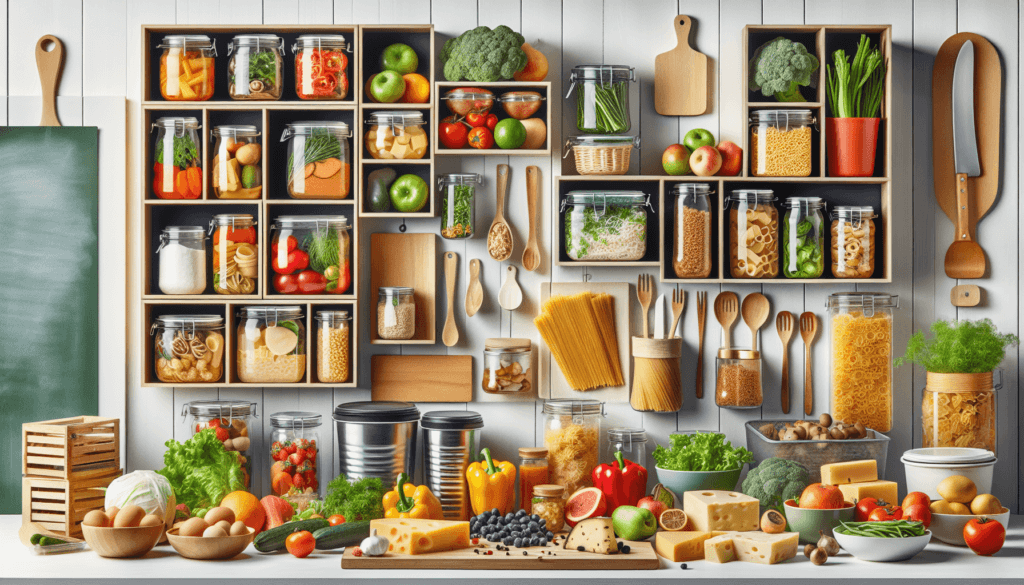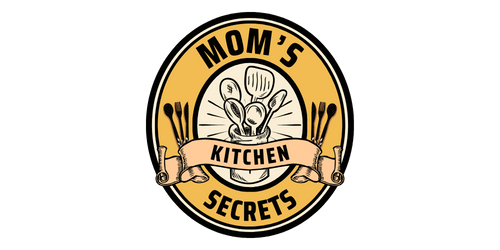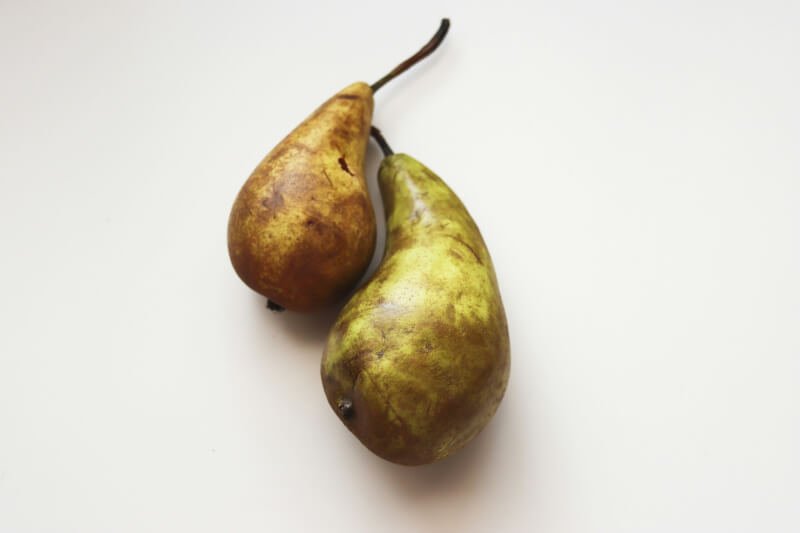In this informative article, you will discover a collection of practical and ingenious kitchen hacks that can help you reduce food waste. From simple tips like using leftovers creatively to creative ways to repurpose kitchen scraps, these easy-to-implement strategies will not only save you money but also contribute to a more sustainable lifestyle. So, whether you’re a seasoned cook or just starting out in the kitchen, get ready to learn some fantastic tricks that will revolutionize how you manage your food and minimize waste.

Meal Planning
Create a weekly meal plan
Creating a weekly meal plan is an excellent way to reduce food waste and save money. By planning your meals in advance, you can ensure that you only buy the ingredients you need and avoid impulse purchases at the grocery store. Sit down once a week and decide what meals you want to prepare for the upcoming week. This will not only help you stay organized but also give you the opportunity to choose recipes that use similar ingredients, allowing you to use up leftovers effectively.
Make a shopping list
Once you have your meal plan in place, it’s time to make a shopping list. Go through each recipe and jot down all the ingredients you’ll need. Having a well-organized list will not only save you time at the grocery store but also prevent you from buying items you already have at home. Be sure to check your pantry and fridge before heading out, so you don’t end up buying duplicates. Stick to your list and avoid impulsive purchases to minimize food waste.
Buy only what you need
When you’re at the grocery store, it’s tempting to stock up on food items, especially when there are sales or discounts. However, buying more than you need often leads to food waste. To combat this, try to buy only what you need for the week ahead. Be realistic about how much food your household will consume, and only buy perishable items in quantities that you can finish before they go bad. By shopping mindfully, you can minimize waste and maximize the use of your groceries.
Storage Tips
Properly store fruits and vegetables
Proper storage of fruits and vegetables is crucial in preventing them from spoiling prematurely. Different types of produce have different storage requirements, so it’s essential to know which items should be stored at room temperature and which ones need to be refrigerated. For example, bananas, apples, and citrus fruit are best kept at room temperature, while delicate leafy greens and berries should be stored in the refrigerator. Understanding the optimal storage conditions for each item will help you prolong their shelf life and minimize waste.
Extend the shelf life of herbs
Fresh herbs are a wonderful addition to any meal, but they can quickly go bad if not stored correctly. To extend the shelf life of herbs, try storing them in a glass jar with some water, like you would with cut flowers. Alternatively, you can also wrap them in a damp paper towel and place them inside a resealable bag in the refrigerator. Another trick is to freeze herbs in ice cube trays with a little water or olive oil. These methods will help keep your herbs fresh for longer, allowing you to use them in multiple recipes.
Store leftovers correctly
Leftovers are a great way to reduce waste and save time in the kitchen, but they need to be stored correctly to maintain their quality and safety. When storing leftovers, transfer them to airtight containers or wrap them tightly in aluminum foil or plastic wrap. Label each container with the date and contents to keep track of what needs to be used up first. It’s important to refrigerate leftovers promptly and consume them within a few days. If you have large servings, consider portioning them out into smaller containers before refrigerating or freezing, making it easier to reheat and avoid waste.
Freezing Food
Freeze excess produce
Freezing excess produce is an excellent way to preserve it for future use. If you have fruits or vegetables that are starting to ripen or appear a bit overripe, don’t let them go to waste; freeze them! Wash and cut the produce as needed, then lay them out in a single layer on a baking sheet and place it in the freezer. Once frozen, transfer the pieces into airtight freezer bags or containers. Frozen fruits can be used in smoothies, baked goods, or as toppings for yogurt, while frozen vegetables can be easily added to soups, stir-fries, or casseroles.
Portion meals before freezing
When freezing meals or leftovers, it’s crucial to portion them appropriately. Freezing large quantities in a single container can make it difficult to use only a portion of the food when needed, leading to waste. Instead, divide the meal into individual or family-sized portions before freezing. This way, you can thaw and reheat only what you need, reducing the risk of food going unused and wasted. Use freezer-safe containers or bags to store the portions, and don’t forget to label them with the date and contents for easy identification later on.
Label and date your frozen items
Properly labeling and dating your frozen items is essential for efficient meal planning and reducing food waste. It’s easy to forget what’s in your freezer, especially when items start to look similar after being frozen. Always label each container or bag with the contents and the date it was frozen. This way, you’ll know exactly what you have on hand and how long it has been frozen. By using the oldest items first, you can ensure that nothing gets forgotten and left to waste away at the back of your freezer.
Reviving and Reusing Ingredients
Revive wilted vegetables
We’ve all experienced the disappointment of finding a bag of wilted vegetables in the back of the fridge. But fear not! There are ways to revive these sad-looking veggies and give them a new lease on life. One method is to soak wilted vegetables, such as lettuce or kale, in ice-cold water for about 15 minutes. This will help crisp them up and make them look and taste fresh again. Alternatively, you can use wilted veggies in cooked dishes like soups, stews, or casseroles, where their texture won’t be as noticeable. With a bit of creativity, you can salvage these vegetables and prevent them from going to waste.
Reuse vegetable scraps
Don’t toss those vegetable scraps in the trash just yet! Many parts of vegetables that are often discarded can actually be used to create delicious recipes and reduce waste. For example, carrot tops can be turned into pesto, broccoli stems can be grated and used in slaws or stir-fries, and celery leaves can be added to soups or salads. Get creative and experiment with different recipes to find new ways to use up vegetable scraps. Not only will you reduce waste, but you’ll also add extra flavor and nutrients to your dishes.
Turn stale bread into breadcrumbs
Stale bread is a common occurrence in many households, but instead of throwing it away, you can easily transform it into breadcrumbs. Simply tear the bread into small pieces and pulse them in a blender or food processor until you have fine crumbs. You can use these breadcrumbs in a variety of recipes, from coating chicken or fish to adding texture to casseroles or stuffing. If you have a surplus of breadcrumbs, you can even freeze them for future use. By repurposing stale bread, you’ll save money and prevent it from ending up in the trash.
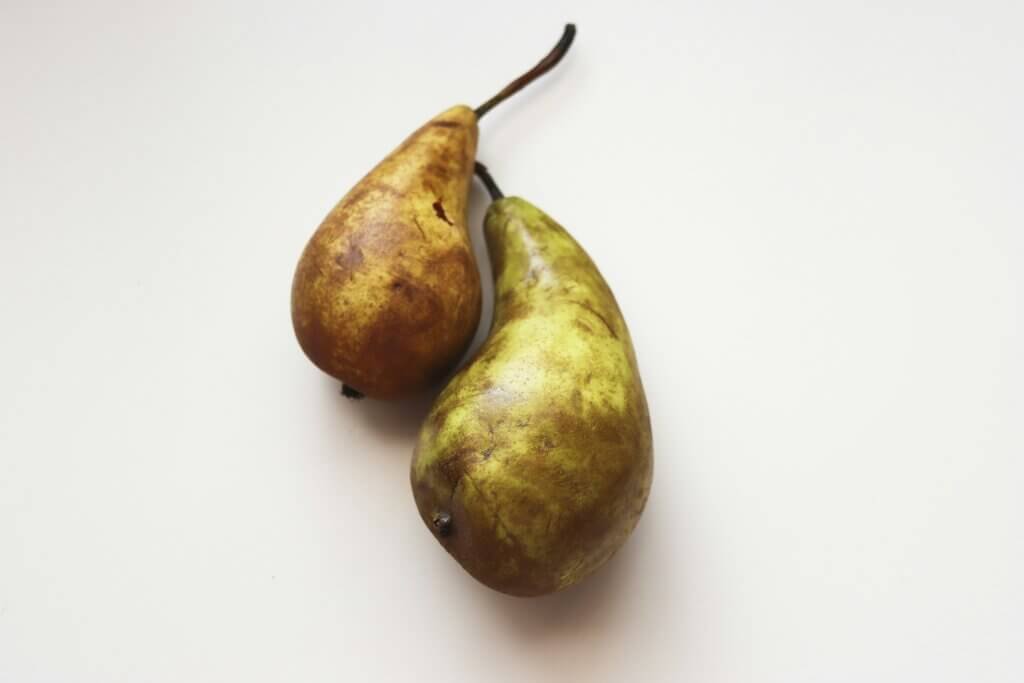
Using the Whole Ingredient
Use citrus peels
Citrus peels are often discarded without a second thought, but they actually contain a ton of flavor and can be utilized in various ways. Before juicing lemons, limes, or oranges, take a moment to zest them and save the peels. Citrus zest can add a burst of citrusy flavor to dishes like salads, desserts, or marinades. You can also dry the peels and use them to infuse flavor into tea or homemade flavored salts. Get creative and explore different recipes and techniques to maximize the use of these versatile peels.
Cook with vegetable greens
When cooking with vegetables, it’s common to focus solely on the edible parts, such as the carrots, broccoli florets, or beet roots. However, many vegetable greens are not only safe to eat but also packed with nutrients. For example, beet greens can be sautéed with garlic as a healthy side dish, or radish greens can be added to soups or stews for a peppery kick. Before discarding vegetable greens, give them a rinse and consider incorporating them into your meals. You’ll not only reduce waste but also add extra vitamins and flavors to your dishes.
Utilize meat bones for broths
After enjoying a delicious roast chicken or a juicy steak, don’t throw away the bones! Meat bones are a valuable ingredient that can be used to create rich and flavorful broths. Simply place the bones in a large pot, cover them with water, and add some vegetables and seasonings. Allow the mixture to simmer for several hours, and you’ll end up with a homemade broth that can be used as a base for soups, stews, and sauces. Not only will you extract every bit of flavor from the bones, but you’ll also reduce waste and save money by making your own broth.
Understanding Expiration Dates
Learn the difference between ‘best before’, ‘use by’, and ‘sell by’
Understanding the meaning behind different expiration dates is crucial in reducing food waste. ‘Best before’ dates indicate that the product is at its best quality until that date but can still be consumed safely afterwards. ‘Use by’ dates are more critical and imply that the product should be consumed before that date for optimal safety and quality. ‘Sell by’ dates are used by retailers to indicate how long a product should be displayed for sale. It’s important to pay attention to these dates, but also trust your senses and judgment when deciding if a product is still suitable for consumption.
Trust your senses
While expiration dates provide a general guideline, trusting your senses is essential in determining if a food item is still good to eat. Before throwing something away based solely on the date, take a moment to examine it. Does it look and smell normal? Does it have any unusual texture? Trust your instincts and use your senses of sight, smell, and touch to assess the freshness of the product. In many cases, food items may still be safe to consume even after the expiration date if they appear and smell fine.
Don’t be afraid of slightly expired food
It’s important to note that many food items are still safe to consume even after their expiration dates, particularly if they have been stored properly. Non-perishable items, such as dry goods, can often be enjoyed for months past their expiration dates, as long as there are no signs of spoilage. Some canned goods have even been found to be safe to consume years after the date on the label. However, it’s crucial to use your judgment and trust your senses. If something looks or smells off, it’s best to err on the side of caution and discard it.
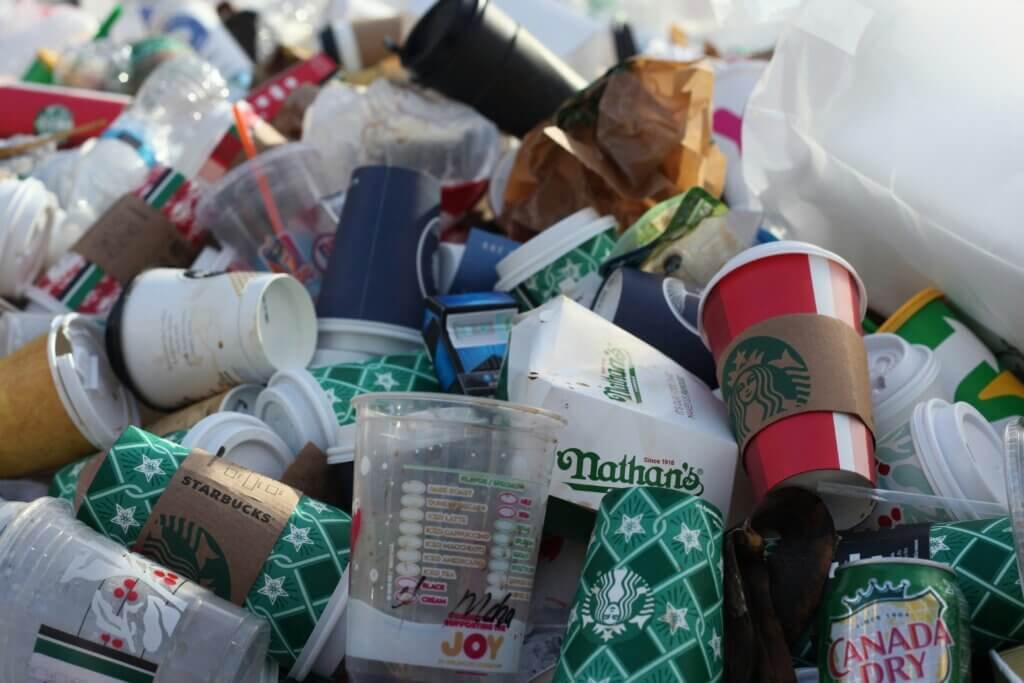
Preserving and Canning
Make homemade jams and preserves
Preserving fruits in the form of jams and preserves is a fantastic way to extend their shelf life and enjoy them all year round. Making homemade jams and preserves is easier than you might think and doesn’t require any fancy equipment. Simply cook down your favorite fruits with sugar and lemon juice, and pour the mixture into sterilized jars. Seal the jars properly and store them in a cool, dark place. Homemade jams and preserves are delicious on toast, in yogurt, or as an accompaniment to cheese.
Can excess fruits and vegetables
If you find yourself with an excess of fruits or vegetables, canning is an excellent way to preserve them for later use. Canning involves sealing food in jars and processing them to create a vacuum seal that prevents spoilage. There are two methods of canning: water bath canning and pressure canning. Water bath canning is suitable for acidic foods like jams, pickles, and tomatoes, while pressure canning is necessary for low-acid foods such as vegetables and meats. With proper canning techniques, you can enjoy your favorite fruits and vegetables long after their natural season has passed.
Try pickling
Pickling is a traditional method of preserving fruits or vegetables that not only extends their shelf life but also adds a tangy and flavorful twist. The process involves soaking the produce in a mixture of vinegar, water, sugar, and spices, which helps to preserve it and enhance its taste. Pickled foods can be enjoyed as a condiment, added to sandwiches or salads, or served as a side dish. Experiment with different types of produce and flavors to create unique pickles that will add a burst of flavor to your meals.
Creative Leftovers
Transform leftovers into new dishes
Leftovers don’t have to be boring! Get creative in the kitchen and transform them into new and exciting dishes. For example, yesterday’s roasted chicken can be shredded and used as filling for tacos or sandwiches. Leftover rice can be turned into a hearty fried rice by tossing it with vegetables, protein, and soy sauce. Use your imagination and experiment with different combinations to breathe new life into your leftovers. By repurposing them into delicious meals, you’ll not only reduce waste but also save time and money in the process.
Make a stir-fry or fried rice
Stir-fries and fried rice are perfect dishes for using up leftover vegetables, proteins, and grains. Simply sauté your leftover ingredients in a hot pan with some oil, garlic, and soy sauce for a quick and nutritious meal. Stir-fries are incredibly versatile, allowing you to mix and match different flavors and textures based on what you have on hand. With a few simple ingredients and some creativity, you can turn your leftovers into a delicious and satisfying meal.
Create a leftover soup or stew
Another great way to utilize leftovers is by transforming them into a flavorful soup or stew. Whether you have leftover roasted vegetables, cooked meats, or pasta, you can combine them with broth, herbs, and spices to create a hearty and comforting dish. Soups and stews are perfect for using up smaller quantities of various ingredients and are a great option for those cooler days when you crave something warm and nourishing. Get creative with your combinations and feel free to experiment with different flavors and textures.

Composting
Start a compost bin
If you’re looking for a sustainable way to reduce food waste, starting a compost bin is an excellent option. Composting involves collecting organic waste, such as fruit and vegetable scraps, coffee grounds, and eggshells, and allowing them to decompose naturally. The resulting compost can be used as a nutrient-rich fertilizer for your garden or potted plants. To start composting, find a suitable bin or container, place it in a convenient location, and begin adding your food waste. With time and proper maintenance, you’ll have rich compost to help nourish your plants and reduce waste.
Learn what can be composted
While many food scraps can be composted, it’s important to know which items can and cannot go into your compost bin. Suitable items for composting include vegetable and fruit scraps, coffee grounds, tea bags, eggshells, and yard waste like leaves and grass clippings. It’s best to avoid composting meat, dairy, oily foods, and anything treated with chemicals or pesticides, as these can attract pests or take longer to break down. By understanding which items are compostable, you can ensure that your compost remains healthy and odor-free.
Use compost in your garden
Once you have created compost, it’s time to put it to good use in your garden. Compost is a fantastic natural fertilizer that enriches the soil, improves its structure, and provides nutrients for your plants. Spread a layer of compost over your garden beds or mix it into the soil before planting. The compost will help retain moisture, reduce the need for synthetic fertilizers, and promote healthy plant growth. By using your homemade compost, you can close the loop and turn your food waste into a valuable resource for your garden.
Reducing Portion Sizes
Serve smaller portions
Reducing portion sizes is a simple yet effective way to cut down on food waste. Start by serving smaller portions at mealtime. It’s easy to add more food to your plate if you’re still hungry, but if you serve too much from the start, chances are that some will end up going to waste. Pay attention to your hunger cues and adjust your portion sizes accordingly. You can always go back for seconds if necessary, but starting with smaller portions will help you avoid overeating and wasting food.
Don’t overload plates
When preparing meals, it can be tempting to overload plates to make them look more satisfying. However, this often leads to excessive food waste. Instead, aim for moderation and serve reasonable portions. If you or your family members are still hungry after finishing your plates, there’s always the option of getting seconds. By avoiding the temptation to overload plates, you can reduce the amount of food that goes uneaten and minimize waste.
Save and eat leftovers
Leftovers are a fantastic way to reduce food waste and stretch your meals. If you find yourself with leftover food at the end of a meal, don’t let it go to waste. Save it in appropriate containers and store it in the refrigerator for future meals. Leftovers can be enjoyed as-is, reheated, or reimagined into new dishes. By saving and eating your leftovers, you’ll not only minimize waste but also make your meals more diverse and exciting.
